How Do You Know if a Function Is 1-1
Excel IF Function
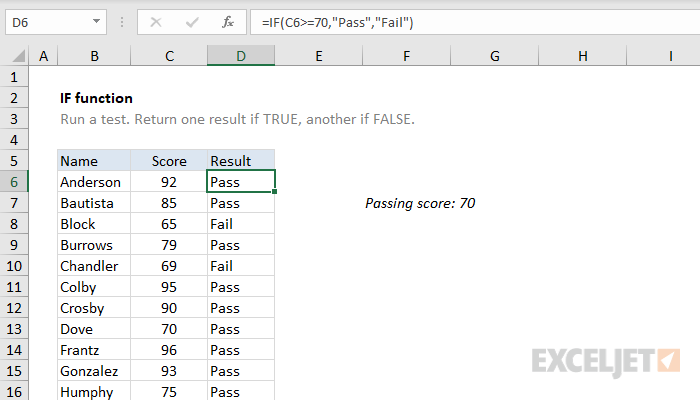
Summary
The IF part runs a logical test and returns one value for a TRUE upshot, and another for a Fake result. For example, to "laissez passer" scores higher up 70: =IF(A1>70,"Pass","Fail"). More than i condition tin be tested by nesting IF functions. The IF function can be combined with logical functions like AND and OR to extend the logical exam.
Purpose
Test for a specific condition
Return value
The values you supply for Truthful or FALSE
Syntax
=IF (logical_test, [value_if_true], [value_if_false])
Arguments
- logical_test - A value or logical expression that can be evaluated equally True or Simulated.
- value_if_true - [optional] The value to return when logical_test evaluates to TRUE.
- value_if_false - [optional] The value to render when logical_test evaluates to FALSE.
Usage notes
The IF part is used to run a logical examination, and reacts differently depending on whether the result is TRUE or FALSE. The first argument, logical_test, is an expression that returns either Truthful or FALSE. Bothvalue_if_true andvalue_if_false are optional, but at least one of them must be provided. The result from IF tin can be a value, a cell reference, or fifty-fifty some other formula.
In the example shown in a higher place, we want to assign either "Pass" or "Fail" based on a test score. A passing score is 70 or college. The formula in D6, copied down, is:
= IF (C6>= seventy , "Laissez passer" , "Neglect" )
Translation: If the value in C6 is greater than or equal to lxx, render "Pass". Otherwise, render "Fail".
The logical catamenia of this formula can be reversed. The formula below returns the same consequence:
Translation: If the value in C6 is less than 70, render "Fail". Otherwise, return "Laissez passer".
Both formulas above, when copied downwardly, will return right results.
Note: If you are new to the idea of formula criteria, this article explains many examples.
Another formula
The IF part tin can return another formula as a upshot. For example, the formula below will return A1*5% when A1 is less than 100, and A1*seven% when A1 is greater than or equal to 100:
Nested IF statements
The IF function can be "nested". A "nested IF" refers to a formula where at least one IF function is nested inside another in gild to exam for more atmospheric condition and render more possible results. Each IF statement needs to be carefully "nested" inside some other then that the logic is correct.
For example, the following formula can exist used to assign a grade rather than a pass / fail result:
= IF (C6< 70 , "F" , IF (C6< 75 , "D" , IF (C6< 85 , "C" , IF (C6< 95 , "B" , "A" ))))
Up to 64 IF functions can be nested. Withal, in general, yous should consider other functions, similar VLOOKUP or HLOOKUP for more than complex scenarios, considering they tin can handle more conditions in a much more streamlined fashion.
Logical operators
When you are constructing a test with IF, you can employ any of the following logical operators:
| Comparing operator | Pregnant | Example |
| = | equal to | A1=D1 |
| > | greater than | A1>D1 |
| >= | greater than or equal to | A1>=D1 |
| < | less than | A1 |
| <= | less than or equal to | A1<=D1 |
| <> | not equal to | A1<>D1 |
The IF function doesn't support wildcards, just y'all can combine IF with COUNTIF to get bones wildcard functionality.
IF with AND, OR, NOT
The IF function can be combined with the AND office and the OR function. For case, to return "OK" when A1 is between 7 and 10, yous can utilise a formula like this:
= IF ( AND (A1> 7 ,A1< 10 ), "OK" , "" )
Translation: if A1 is greater than 7 and less than 10, return "OK". Otherwise, return zip ("").
To return B1+10 when A1 is "reddish" or "blue" you can employ the OR function similar this:
= IF ( OR (A1= "carmine" ,A1= "blue" ),B1+ 10 ,B1)
Translation: if A1 is ruddy or blue, render B1+x, otherwise return B1.
= IF ( Not (A1= "red" ),B1+ 10 ,B1)
Translation: if A1 is Non red, return B1+10, otherwise return B1.
More information
- Read more about nested IFs
- Larn how to employ VLOOKUP instead of nested IFs (video)
- fifty Examples of formula criteria
Encounter below for more IF office examples.
Notes
- To count things conditionally, use the COUNTIF or the COUNTIFS functions.
- To sum things conditionally, utilize the SUMIF or the SUMIFS functions.
- If any of the arguments to IF are supplied as arrays, the IF role will evaluate every element of the array.
Download 100+ Important Excel Functions
Go over 100 Excel Functions you should know in one handy PDF.
Excel video training
Quick, clean, and to the betoken.
Source: https://exceljet.net/excel-functions/excel-if-function
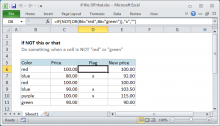
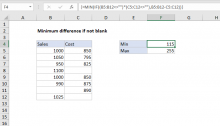
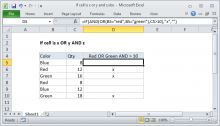
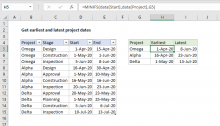
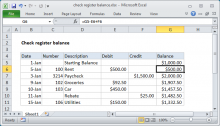
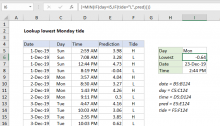
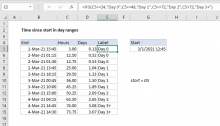
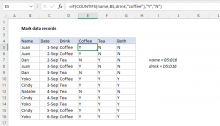
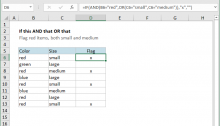
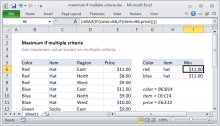
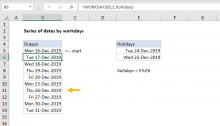
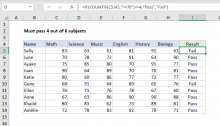
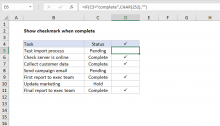

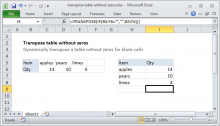



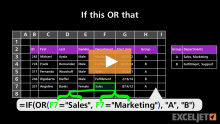

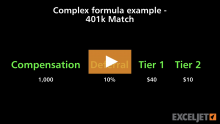
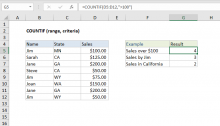
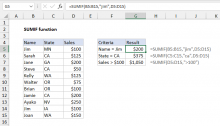
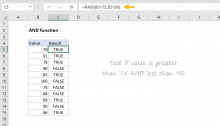
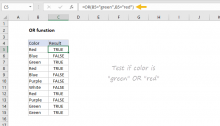
0 Response to "How Do You Know if a Function Is 1-1"
Post a Comment